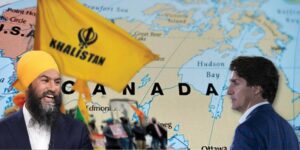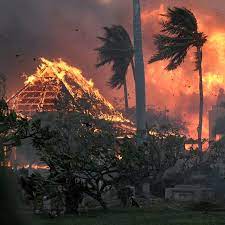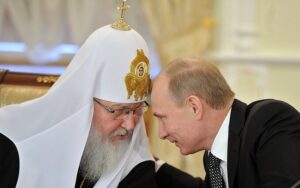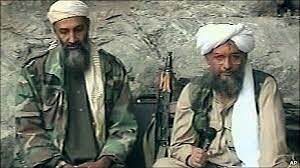Some years ago I interviewed leaders of the Hamas movement in Gaza, including the founder, Sheikh Ahmed Yassin, and the chief operating manager of the organizations, Dr Abdel Aziz Rantisi. While Sheikh Yassin mostly spouted religious rhetoric and said little about the organization, Dr Rantisi was quite forthcoming. I have quoted him in my book, Terror in the Mind of God, and now have gone back to my notes from that interview to give a fuller account of it in an attempt to more fully understand the perspective of Hamas on the use of violence, the possibilities of living alongside Jews, and its prospects for the future.
We met in Dr Rantisi’s comfortable house in Khan Yunis, not far from the compound where Sheikh Yassin lived and taught. I had some trouble finding the location since my Gaza taxi driver spoke little English and I could not converse in Arabic, but we picked up some students at the Islamic University in Gaza who were Hamas supporters and were eager to join me and facilitate my meeting.
Rantisi was wearing a three-piece suit and greeted me at the door, and looked very much like the middle-class medical practitioner and professor that in fact he was. He greeted me with passable English, and invited me inside where he had prepared tea and biscuits.
We talked a bit about his background. His family home had been somewhere between what is now the Israeli cities of Ashdod and Tel Aviv, and was now obliterated. His grandfather, an uncle, and three cousins had died in their struggles with the Israeli occupation, though he didn’t say how.
But he did not hate Jews, Dr Rantisis was quick to reassure me. He only despised Zionism and the occupation of Palestinian land. He reminded me that Jews and Christians are “people of the book” in Islamic reckoning, and they could live amicably side by side.
“Even in Israel?” I asked him.
“Yes,” he said, “as long as you didn’t call it Israel.” He said he could envision a single state solution where people could have common citizenship regardless of their religious affiliation.
I was a bit surprised by this since Hamas was organized around the idea of the political unity of Islam. When I had earlier met with Sheikh Yassin he said that Palestine would not be fully free until it was a Muslim Palestine.
“Yes,” Dr Rantisi said, as if there was no contradiction in the two positions. “But we are hospitable people,” he explained, “and we would welcome Jews and Christians to live in Palestine, just as they have before.”
Rantisi went to Egypt for medical studies, and when he was there he admired the Muslim Brotherhood movement. When he returned he was determined that a similar movement would give life to the floundering efforts at Palestinian liberation. It was then, in the late 1980s, that he met with Sheikh Yassin and others to form a union of activist Muslim groups in Palestine roughly patterned around the Muslim Brotherhood. It brought together a coalition under the common name, Harakat al-Muqawama al-Islamiya, better known by its acronym, Hamas.
Sheikh Yassin become the titular head of the movement even though he was severely disabled by a progressive neurological condition. Still he held daily discourses in his compound in Khan Yunis, as I observed. He was brought in via a wheelchair and propped up on a carpeted dais where he delivered homilies based on the Qur’an. When I was there he used me as the foil for his sermons. He would invite me to ask a question, and when I asked something that I thought was straightforword, such as how Hamas was founded, he would launch into a Qur’an based discourse that had little to do with my question.
Dr Rantisi, on the other hand, was more forthcoming. He was recognized as the true strategist and political leader of the movement, and was widely respected and careful in his plans.
For that reason, I told him, I was surprised that he would authorize the method of suicide bombings. At the time I met with him they were the most dramatic and visible signs of Hamas’ war on Israel.
He did not authorize them, he told me. His answer was certainly meant to avoid any legal responsibility for the acts, but it was also theologically correct, as he explained to me. Suicide is prohibited in Islam. But martyrdom is not. Quite the opposite, martyrdom is praised within the Islamic tradition. But you cannot be commanded to be a martyr. The act has to be chosen freely, as one’s own way of standing up to a perceived oppression.
“We did not allow such martyrdom before, when we thought that the Israelis were serious about negotiating a solution that would provide for Palestinian statehood,” he said. “But now that they have closed the door on that,” he averred, “we have decided to allow it again.”
I said I thought that the Qur’an prohibited the killing of innocent people. Dr Rantisi agreed that it did, but he said that it also allowed—indeed required—that there should be a response to such killing against Muslims, and that the response be in kind. Otherwise, he said, you would just allow the killing to go on.
He gave the example of Dr Goldstein, a Jewish settler in Kiryat Arba settlement near Hebron. He attacked a group of innocent Muslim worshipers in a mosque at the cave of the Patriarchs, sacred to Jews, Muslims and Christians as the resting place of Abraham, Sarah, and other early figures in biblical history. “We have a duty,” Dr Rantisi said, “to respond in kind.”
I challenged him about these acts of what we call suicide bombings and he called self-martyrdom. I pointed out that the Israeli military was one of the most fortified armies in the Middle East and that these sporadic violent acts were certainly painful to Israel, they would never tip the military equation. You cannot win your war with Israel this way, I said.
He looked at me as if speaking to small child and said, “perhaps not in my life time, or even in my children’s lifetime, nor my children’s children’s lifetime. But in my children’s children’s children’s lifetime we might succeed. This is not our struggle, he said, “this is God’s war, and we cannot lose.”
Then he added a telling afterthought. “Besides,” he said, “Israel must be reminded that we are in fact at war.”
It was a war that he experienced daily, he told me. And it was frustrating that Israelis could go about their daily lives nonchalantly, as if there was nothing amiss. A bomb in a market place, he implied, would wake them up to the reality of war that was always in his consciousness.
Did he feel any remorse in allowing young people in the fullness of their youths to undertake these suicide missions and die in such a violent way?
No, he said, since there was something worse than death, and that was to live in constant humiliation. He said that Israel is fighting for land, but Hamas was fighting for pride; he used the Arabic term izzat, which means honor as well as pride. “You can’t understand the humiliation and frustration of the occupation, he said to me, adding that “the occupation is the worst kind of slavery.”
He asked if I had been to a Palestinian refugee camp. I had, I said, including Jabalia camp in Gaza. “It is even worse in Lebanon,” he said. “If you go there you will know what hell is like.”
I asked him about Fateh and the Palestinian Authority on the West Bank. Rantisi said that he hoped that they would unite in the future, but he seemed skeptical since he thought Arafat and the Fateh leadership were too eager to compromise with the Israelis, and abandoned their principles. Palestine should not relinquish more land, he said.
What would a future solution look like, I asked him. “When Palestine is free,” he said. I took that to mean when the whole of the Israel-Palestine region was no longer controlled by Israel.
And what about the millions of Jews in Israel, I asked, must they leave or be destroyed? Rantisi seemed surprised at the question. “No,” he said, “they would be welcome to stay. When we are in power we will not treat them the way that they have treated us. But we must all be free.”
.










